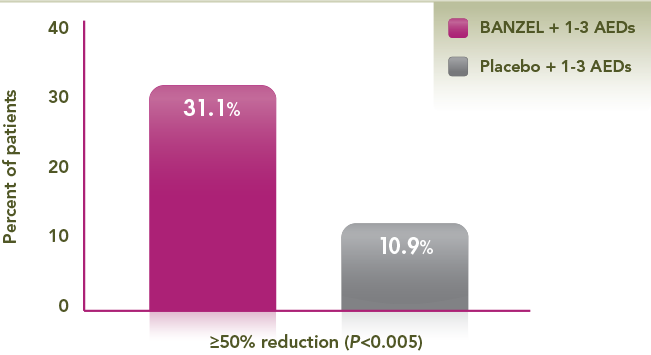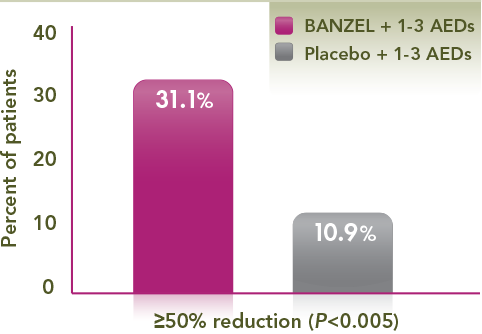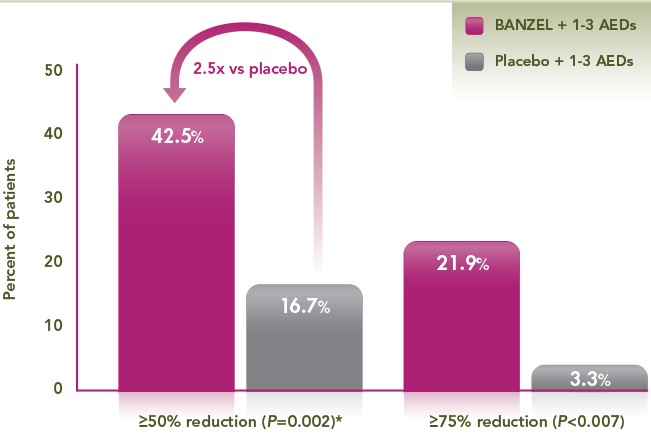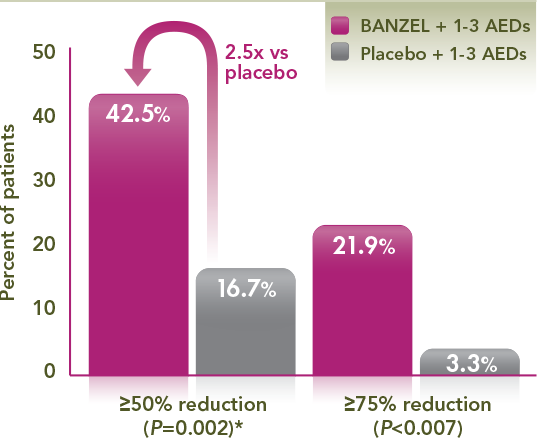SIGNIFICANT RESPONDER RATES IN REDUCTION
OF TOTAL SEIZURES
Nearly 3 times the percent of patients in the BANZEL® group experienced a ≥50% reduction in total seizures compared with that in the placebo group
Patients achieving ≥50% reduction in total seizure frequency per 28 days relative to baseline*1


*Secondary efficacy endpoint.
- A secondary efficacy endpoint, defined as percentage of patients with at least 50% reduction in total seizure
frequency per 28 days during the double-blind treatment phase relative to baseline - Results vs placebo were statistically significant
SIGNIFICANT RESPONDER RATES IN REDUCTION OF TONIC-ATONIC SEIZURES (DROP ATTACKS)
Patients who experienced a ≥50% or ≥75% reduction in tonic-atonic seizures from baseline (per 28 days)1,3


*Secondary efficacy endpoint.
- Results vs placebo were statistically significant
- References: 1. Glauser et al. Rufinamide for generalized seizures associated with Lennox-Gastaut syndrome. Neurology. 2008;70(21):1950-1958. 2. BANZEL® (rufinamide) prescribing information, Eisai Inc. 3. Data on file, Eisai Inc.
 Pivotal Trial Design Information
Pivotal Trial Design Information
- A 12-week, randomized, double-blind, multicenter, placebo-controlled, parallel-group trial to assess the effectiveness of BANZEL (rufinamide) to reduce inadequately controlled seizures associated with LGS in patients (N=138, intent to treat) being treated with 1-3 concomitant stable-dose AEDs1-3
- The primary efficacy variables were the percent change in total seizure frequency per 28 days, the percent change in tonic-atonic (drop attacks) seizure frequency per 28 days, and the seizure severity rating from the parent/guardian global evaluation of the patient's condition1
- All 3 primary endpoints met the prespecified statistical criteria for effectiveness1


